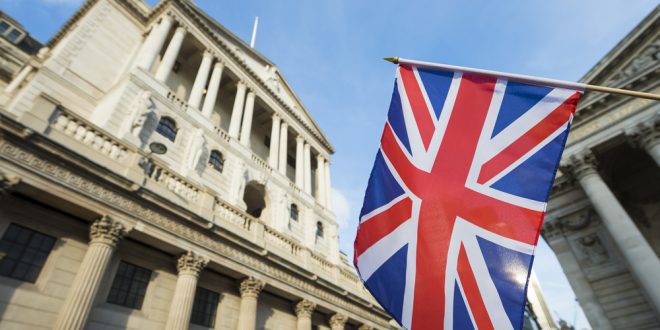Under strong pressures to act against surging inflation, the Bank of England looks ready to explain how it will reduce the vast pile of British government bonds it has bought over the last decade in repeated attempts to stimulate the economy.
Most economists polled by Reuters think the BoE will on Thursday raise interest rates to 0.5% — the threshold at which it has said it will start unwinding its 895 billion pound ($1.2 trillion) quantitative easing programme.
The BoE has bought 875 billion pounds of British government bonds – or gilts – from investors, financed by the creation of new bank reserves paid into the seller’s bank account. It has also bought about 20 billion pounds of corporate bonds.
The gilt purchases helped to lower the cost of government borrowing and left investors free to buy other assets like shares and corporate debt – in theory helping to lower the cost of credit across the wider economy.
The BoE now owns more than half the standard, non-inflation-linked gilts in existence. When the government boosted debt issuance to cover the costs of the COVID-19 pandemic, its holdings moved in step, which some lawmakers said risked compromising the BoE’s independence. read more
With consumer price inflation hitting an almost 30-year high of 5.4% in December, BoE rate-setters are keen to show they are in control of monetary policy. They see unwinding this stimulus, a process economists call quantitative tightening (QT), as a chance to do that.
Quantitative tightening is the reverse of quantitative easing. Instead of expanding or maintaining the 875 billion pounds of the bank reserves issued by the BoE to buy gilts, QT means reducing this figure.
The BoE has said it will start with “passive” QT when interest rates rise to 0.5%. This means the BoE will not actively sell its gilts back to investors, but will instead hold them until they mature.
In the past the BoE used the proceeds of maturing bonds to buy replacements, maintaining the level of its asset purchases. Under passive QT it would cease reinvestment and instead eliminate reserves, in the same way they were created for QE.
This process could start in March, when the 4% 2022 gilt – of which the BoE owns 25 billion pounds – is due to mature. Initially, it will simply amount to a large, predictable and recurrent buyer not turning up to buy gilts.
A purely passive approach to QT would see gilt holdings fall to around 435 billion pounds in 2031 – similar to their pre-pandemic level, according to Reuters calculations.
If all goes smoothly, the BoE might decide it can start to sell small portions of its gilts holdings back to private sector investors on a regular basis. Last August the BoE said it would begin to sell gilts only once Bank Rate has risen to at least 1%, and depending on economic circumstances at the time.
The BoE is also expected to begin active sales in November at an initial pace of 5 billion pounds. QT will substitute for some Bank Rate hikes. In 2017 the U.S. Federal Reserve began to allow its U.S. Treasury bond holdings to mature without being fully reinvested, but the COVID-19 pandemic prompted a renewed expansion of QE.
Minutes from the Fed’s December meeting showed officials had discussed again shrinking the U.S. central bank’s overall asset holdings as well as raising interest rates sooner than previously expected to fight inflation.
The BoE has given little indication of how much it wants to reduce its holding of gilts, but has said that it expects its total balance sheet – which includes the gilts – to be “materially larger” than before the 2008 financial crisis and some way below its level in 2021.
Risk Ahead
As no central bank has attempted QT over a prolonged period, the BoE looks likely to start out cautiously to see how the gilt market, other asset prices and the economy react. Given the precise effects of QE are still debated by economists after more than a decade, opinion varies over the likely consequences of the policy’s reversal.
The consensus view is QT will mean higher yields and a steeper curve, amidst concerns about who will step in to buy all the gilts. Some near-term volatility is possible as valuations adjust to any announcement. But provided QT is clearly communicated and is predictable.
A major, sustained reduction in gilt prices would reduce the value of the remaining gilts held by the BoE and potentially lumber the central bank with hefty losses on paper, which in an extreme scenario might require the taxpayer to step in and recapitalize the British central bank.
It is also expected that the Bank of England’s nine-strong Monetary Policy Committee (MPC) to increase rates from 0.25% to 0.5% on Thursday, the first back-to-back interest rate rises since 2004.
It increased rates in December from 0.1% in a more controversial decision. The Bank said at the time it could no longer ignore inflation, something that until it had tried to present as a passing issue. Inflation has continued unabated since then, leading to conviction that the Bank will once again have to act.
The Bank hopes that will bring inflation back closer to its 2% target. Consumer Prices Index (CPI) inflation already hit a near 30-year high of 5.4% in December and painful energy price rises are expected to push it beyond 6% this spring.
Experts are predicting Ofgem’s energy price cap review also on Thursday will reveal a 49% rise, pushing the average household annual bill to around £1,900.
The question from sceptics is whether an increase in rates is actually going to do anything to lower the cost of goods or services or necessities like heating.
Truth to say, the Bank of England cannot control the major factors that will push inflation up in the immediate future, such as global energy prices or elevated shipping costs. But a February rate hike would help persuade the market that the Bank really means business, and help to stave off embedded inflationary expectations that could spark a dreaded wage-price spiral.
The Omicron variant has almost certainly left the economy weakened as a result of greater consumer hesitancy and a rise in the number of people isolating. But that the MPC raised Bank Rate in December regardless indicates that the committee placed less weight on the virus. And recent developments are likely to reinforce this stance.
The hit to growth is likely to have been more modest than first feared, while recent official figures confirmed the UK jobs market continues to fire on all cylinders with little impact from the end of furlough. What else might the Bank do? At some point it is going to have to start unwinding its £895 billion quantitative easing programme. The BoE kept on buying bonds from banks and pension funds in a bid to flood cash into the economy. It will probably soon start selling back those bonds.
The Bank has already said it would consider quantitative tightening when rates hit 0.5%, which means the Bank could make the announcement alongside Thursday’s decision. Other central banks might follow suit. Most mortgage holders are on fixed rate products, meaning tomorrow’s changes will not have an immediate effect. However, they will find borrowing pricier when they roll off fixed deals and re-mortgage.
 Noor Trends News, Technical Analysis, Educational Tools and Recommendations
Noor Trends News, Technical Analysis, Educational Tools and Recommendations





